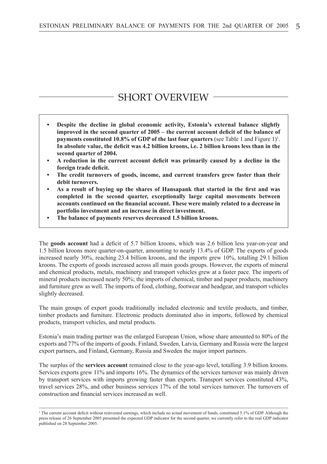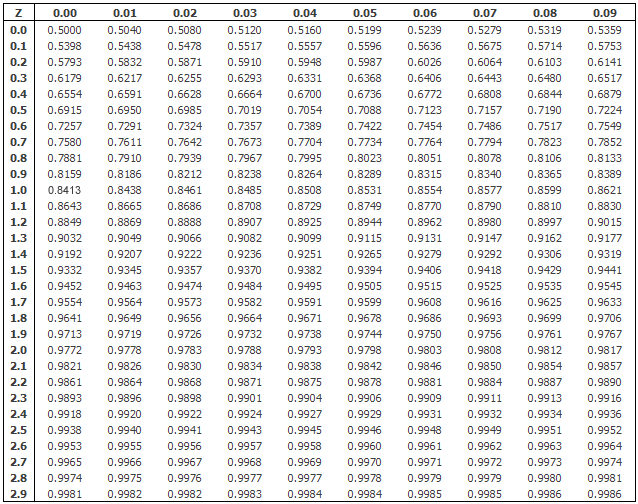Contents
Your coworkers are very friendly, especially in the cafeteria of which there are TWO. They have generous PTO and breaks, and break rooms are fitted with self service machines to buy snacks and drinks of all different kinds. You can decline health insurance and take a dollar raise instead, which was a nice bonus.
Scientists who engage in post-publication review often do so out of a sense of duty to their community, but this important work does not come with the same prestige as other scientific endeavours. Recognizing and incentivizing such activities could go a long way to cleaning up the literature. As academics who publish, review papers or serve as editors, we appreciate that these issues are complicated. And we feel that journal editors are dedicated and sincere in their efforts.

Similar attention must be devoted to stressors and threats to science that arise in response to research that is considered inconvenient. The same institutions and bodies that have scrutinized science must also start a conversation about how to protect it. Journals and professional societies should condemn specious calls for retraction. Journals and institutions can also publish threats of litigation, and use sunlight as a disinfectant. The company trying to be the first to turn the powerful gene-editing tool CRISPR into medicine faces a number of hurdles. So here is the List of Top Companies in Spain based on the total revenue.
Publishers have opted to remain outside of the scholarly community and work against it, rather than with it. Actions of civil disobedience like those of Aaron Swartz and Alexandra Elbakyan are a logical consequence of two decades of stalled negotiations and failed reform efforts. One of the things that I think a lot of people coming to the meeting didn’t realize is that many journals are perfectly fine with people posting pre-prints of articles that are being considered by the journal. Some, likeeLife,PLOS,PeerJ andGeneticsactively encourage it. Others, likeEMBO,PNAS,Science and allNature journals unambiguously allow pre-print posting. On the flip side, journals from the American Chemical Society and some other publishers will not accept papers if they were posted as pre-prints.
Argentina Export data -Jan to Oct-2017
This opinion also reinforces my assessment that talking with legacy publishers, at this point, has become a complete waste of time. This is how far they are willing to go and no further concessions can be expected. After 20 years of negotiations about how to realize universal open access to all scholarly literature with publishers, maybe it’s time to stop negotiations and develop an open access infrastructure without publishers? After all, it would save human lives as well as billions of dollars every year.

Poor leadership from management lead to constant face-to-face or over the radio intimidation tactics, which demoralised staff on a daily basis. Senior management have no understanding of technology and are detrimental to the operation through lack of change. Extremely low morale and poor conditions make the warehouse a miserable place to be. Environment was incredibly dusty and harmful to your health if exposed for long periods. Parcel sorting performed by an impressive machine, then loaded manually by employees.
Director of Marketing
Attempts to coordinate global intellectual property rules led to the 1883 Paris Convention and the 1886 Berne Convention, and eventually to the creation of the United Nations’s World Intellectual Property Organization in 1967. But nations who signed on to those agreements retained the ability to determine the length of patents and what products would be covered. For many nations, that flexibility meant excluding medicines from patent protection. For example, Germany’s patent law of 1877 labeled medicines as “essential goods,” along with food and chemicals, and prohibited any attempts to patent them. If you include journal impact factors in the list of publications in your cv, you are statistically illiterate. There are numerous problems with this calculation that I don’t have time to go into here.
- And we feel that journal editors are dedicated and sincere in their efforts.
- This argument for medicine enclosure presents two important ironies.
- The editors at Annals of Internal Medicine, for example, have responded to our correction letters with an unsigned rebuttal that, in our view, raises serious questions about their commitment to managing outcome-switching.
- For the resistance to medicine enclosure to see better results, it needs to make clear the life-and-death nature of the struggle, and highlight the injustice inherent in the collective contribution to private profits.
- Four years later such views are being buffeted by the rising tides of open access and social media.
I liked this method over the head-to-head comparison for two papers as it allows these papers the benefit of the reflected glory of other papers in the journal. To look at this, I ran a Monte Carlo analysis comparing a random paper from one journal with a random one from JCB and looked at the difference in number of citations. Most NCB papers have a similar number of cites to papers in JCB, but there is a tail of papers with higher cites, a similar but more amplified picture for Nature. A JIF for 2013 is worked out by counting the total number of 2013 cites to articles in that journal that were published in 2011 and 2012.
JP Morgan Technical Analysis – JP Morgan Trading: 2022-04-15
The inefficiency of the enclosed medicine is paired with the creation of real barriers to medicine innovation across the board. By definition, a reward system based on artificial exclusivity will wall off knowledge from being shared. For-profit pharmaceutical corporations are known for discouraging innovations by creating voluminous “packet thickets” and seeking extended protection for their monopolies in a process known as “evergreening” their patents. When pushing for the TRIPS agreement and other mechanisms to extend medicine patent rights, pharmaceutical corporations justify enclosure by claiming that patents are necessary to spur innovation.
US activists threw the ashes of AIDS victims on the lawn of the White House, while African activists called treatment-resistant government ministers murderers. The protests led to the dismantling of patent price barriers—and then to massive public programs to distribute the medicine at low or no cost. Fortunately, Emilie Marcus, CEO of Cell Press and Editor-in-Chief of Cell, was at the meeting to explain it to us. Her response was, and I’m paraphrasing but I think I’m capturing it correctly, is that they are happy to publish papers initially posted as pre-prints so long as the information in the paper had not already been noticed by people in the field. In other words, it’s ok to post pre-prints so long as nobody noticed the pre-print.

And more our our Covodshield is the one gives best result the news comes from AIIMS after through medical research and investigation but WHO is whemently not announcing it. Due to the compulsion of these medical mafia giants particularly China’s influence. Ivermectin is a miracle drug with zero side effects.The entire covid affected population of Delhi and UP combined were cured by administering Ivermectin.So, is the case for Goa. Swaminathan made the post soon after Goa’s health minister announced that every Goa resident 18 and older would be given ivermectin as prevention regardless of their COVID-19 status, as part of the Indian state’s effort to stop the transmission of the virus. Sandom continues to consult in the world of interactive advertising and digital marketing communications, and recently launched a new media capture and sharing app and cloud resource called MemoryBox.
Get hands on complete global and Indian trade data of Adrenal cortical hormones, in dosage with real time price trends and analysis. I had not anticipated support for the notion of stopping negotiations with publishers from the same https://1investing.in/ person who also confirmed that publishers add little value to scholarly articles three years ago, Joseph Esposito. In his own words, Mr. Esposito is a “publishing consultant”, working for publishers involved in research publishing.
Recommended Posts
I’d like to think people who are supportive of pre-prints will think twice before sending a paper toCellin the future because of this policy (of course I’d like it if they never consideredCell in the first place, but who am I kidding). But I suspect this is going to be a drag on the growth of pre-prints — how big a drag, I don’t know, but it’s something we’re probably going to have to work around. I am well aware of the risks involved, particularly to young researchers trying to forge a career in a culture that is so inured to the impact factor. It will take a determined and concerted effort from those in a position of influence, not least by senior researchers, funders and university administrators. Two decades of criticism have done little to break the addiction to a measure of worth that is statistically worthless.
Marketing Manager
After nine months, we asked the journal why, at minimum, an expression of concern had not been posted. An editor admitted that they had not anticipated the process taking as long as it had. The journal communicated its decision to accept our letter and retract the article 11 months after our submission.
A petition now circulating for a global research agreement calls on policymakers to “Make Medicines for People, Not Profit.” For that noble goal to be achieved, the fence surrounding essential medicines will need to be torn down once and for all. Similarly, there’s no shortage of proposals for reform of the current system. Those plans range from buy-outs of corporate patents to open generic medicine production in low-income countries. Many proposals are grounded in redirecting the enormous government investment in the current patent system to greater support for early-stage research and prize-oriented funding to motivate late-stage drug development. At varying levels, many of these proposals are already in operation. Yet when it comes to inducing innovation for essential medicines, it turns out that the evil of monopoly patents isn’t at all necessary.
The facility was extremely slow to respond to COVID-19; Measures were put in place too late and the virus swept through the building. J. Craig Venter, the genomics mogul and scientific wizard who recently created a unique living organism from scratch in a matter of days, is searching for pay-dirt in biodiversity-rich marine environments around the world. Venter’s yacht, the Sorcerer II, is now steaming toward the South Pacific after collecting land and marine microbes from Maine to Mexico, Panama, Chile, and — most recently — on Ecuador’s famous Galapagos Islands. Pfizer CEO Albert Bourla indicated that company is looking beyond the Covid pandemic which has led to record windfalls for the pharmaceutical giant.
Months later, we were gratified to learn that the authors had elected to retract their paper. In the face of popular articles proclaiming that science is stumbling, this episode was an affirmation that science is self-correcting. Last year, US social media and politicians exploded with anger when a young pharmaceutical company executive increased the price of a toxoplasmosis drug by some 5,000 percent overnight. Over a hundred leading US cancer physicians co-authored an article decrying the greed of the pharmaceutical industry, noting that the cost of cancer medicine averages over $100,000 per patient annually. There’s no shortage of popular frustration with the current system, especially now that the dire effects of enclosure have reached beyond low-income countries to cause real harm to the residents and governments of the Global North. An August 2015 poll showed that nearly a quarter of US residents struggle to pay for prescriptions, and that strong majorities feel that drug costs are unreasonable and believe drug companies prioritize profits over people.
But we’re still trying to decide over who should have that market opportunity? Popular discontent and ideas for reform don’t always lead to change. After all, the land-enclosure movement triggered plenty of passionate protests, but the enclosure proceeded without significant interruption. For the resistance to medicine enclosure to see better results, it needs to make clear the life-and-death nature of the struggle, and highlight the injustice inherent in the collective contribution to private profits. Conversely, a lack of access to medicine causes enormous social problems in terms of contagion and economy-depressing illnesses.
Frequent errors, once recognized, can be kept out of the literature with targeted education and policies. These and others are described in depth in an upcoming publication7. We have identified ten red-flag areas that can help to differentiate healthy debate, problematic research practices and campaigns that masquerade as scientific inquiry (see ‘Ten red flags’). None by itself is conclusive, but a preponderance of troubling signs can help to steer the responses of scientists and their institutions to criticism. Bees, beetles and blowing prairie winds can carry Monsanto’s genetically-modified canola a good 26 kilometers – and a whole lot farther if the transgenic seed or pollen hitches a ride on passing trucks, trains or trousers.
But there was little in the way of binding international law to back up that position. So the industry pushed directly for the US government to make intellectual-property protection a priority in all trade negotiations. Of course, inserting monopoly patent rights into trade agreements runs counter to those agreements’s stated purpose of dismantling barriers Stock Split — Corporate-Actions.web to global competition. Yet the pharmaceutical industry, reliably at the top of the list in both lobbying expenditures and political campaign contributions in the United States, quickly found willing partners on Capitol Hill and in the White House. The United States soon adopted intellectual property protection as a litmus test for its trade partners.
It now expects earnings per share of $6.40 to $6.50 for the year, up from its previous forecast of $6.30 to $6.45. The pharmaceutical company also raised the lower end of its sales guidance and now expects revenue of $99.5 billion to $102 billion for the year. The company also expects its vaccines in development for respiratory syncitial virus to be a big earner once it earns regulatory approval.

Comment (0)